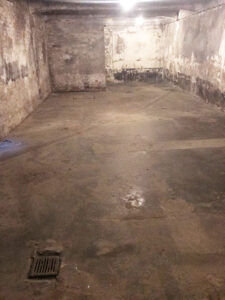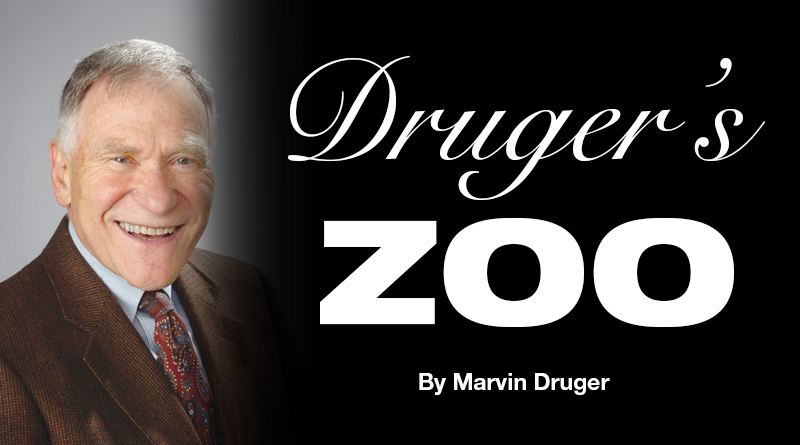Dealing with Prejudice and Hatred
By Marvin Druger
Email: mdruger@syr.edu

We are in a time of turmoil. The COVID-19 virus has devastated many lives and all sorts of political, social and economic problems exist in our country. Many different perspectives have divided the people in the U.S., leading to an invasion of the capitol building in Washington D.C. on Jan. 6. Prejudice and hatred are prevalent in our society.
I grew up in Boro Park, Brooklyn, a poor, predominantly white, Jewish neighborhood. My best friends were BZ, who was protestant, and Gerald, who was catholic. Each family practiced their religion and there was no prejudice among us. We played sports together and respected each other, regardless of different religious beliefs and practices. No people of color lived in the neighborhood, so there was no prejudice against them.
Many years later, I stood on the balcony of the Lorraine Motel in Memphis, Tennessee, where Martin Luther King was shot and killed. Although he had bodyguards, someone with a rifle shot him from a bathroom window in a boarding house across the street. There were tears in my eyes. How could someone willfully kill this great man who was trying to do so much good for humanity?
I visited Mauthausen Concentration Camp in Upper Austria, near the village of Mauthausen. There is a stone quarry and prisoners were forced to carry huge blocks of stone up 186 steps, known as the “Stairs of Death.” Many prisoners were worked to death or executed by the Nazis.
“We are not born with prejudice and hatred. These are learned attitudes and behaviors. So, parents and teachers can play a major role in minimizing these traits.”
I also visited Auschwitz-Berkanau concentration camp in Poland. The infamous sign hung over the entrance gate, i.e., Arbeit Mach Frei (Work sets you free). There was a long dirt path leading to a small building. This was a gas chamber where many Jews and others were exterminated by the Nazis. As I stood inside the gas chamber, I could imagine that one of these prisoners could have been me. There was an oven outside the gas chamber where dead bodies were cremated. This was the extreme of prejudice and hatred.
I was at the Holocaust Museum in Washington DC with my family. We were looking at an exhibit of thousands of shoes that were taken from Jewish victims of the Nazis. Two teenage boys were standing behind us. One of them announced, “They should have finished the job.”
These are just a few instances when I witnessed examples of prejudice and hatred. These teenagers could not imagine the slaughter of human beings that took place during the Holocaust. Many teenagers cannot comprehend the Nazi horrors of World War II, nor do they seem to know much about them. As a young boy, I remember being afraid that the Nazis would come to the U.S. and kill us all.
Nicola Sacco was a shoemaker and Bartolemeo Vanzetti was a fish peddler. Both were Italian immigrants and anarchists. In the early 1920s, they were accused of the murder of two people during the robbery of a shoe factory in Braintree, Massachusetts. They were tried and executed in 1927, in spite of public outcries about the unfairness of the trial and the ambiguous nature of the evidence. Prejudice against and hatred of anarchists and Italian immigrants apparently played a role in the treatment of Sacco and Vanzetti.
In 1977, Michael Dukakis, then governor of Massachusetts, issued a proclamation stating that Sacco and Vanzetti did not receive a fair trial and that any disgrace should be forever removed from their names. A glass and mosaic mural about the Sacco-Vanzetti case by the late artist Ben Shawn fills the wall on the east side of the HB Crouse Building at Syracuse University. It is one of the many treasures of Syracuse University. A famous reminder about prejudice and hatred.
My family was fairly orthodox. I went to synagogue regularly and even led a group of students to Hebrew study after-school. We learned how to read Hebrew and pray, but nobody ever explained what we were reading. The aim was to finish reading the prayers in Hebrew sooner that he person next to you.
I am a member of Temple Concord in Syracuse, but I do not participate. My membership is in honor of my dear, deceased wife, Pat. I am not religious, but I am spiritual. I hope there is something spiritual that guides us through life, but I have trouble believing it. I do admire people who find solace and comfort in religion.
My mother was religious. I thought that she would become upset and angry when she found out that her granddaughter was going to marry someone who was Protestant. Instead, her comment was, “As long as they love each other.” Indeed, against Jewish tradition, my daughter married a Protestant, and my two sons have Catholic wives. My grandson married an Indian-American woman and my granddaughter is dating a Christian man. Who cares? “As long as they love each other.”
Dealing with prejudice and hatred
How can people deal with the prejudice and hatred that are so persistent in our society today? Is it even possible to find ways to do this? Here are some of my perspectives about this issue.
We are not born with prejudice and hatred. These are learned attitudes and behaviors. So, parents and teachers can play a major role in minimizing these traits. Also, prejudices arise in groups, so it’s important who you hang around with.
We tend to want everyone to think and behave as we do, and we have to recognize this is an unrealistic expectation. We have to learn to respect diversity of opinions, physical traits and cultural habits. We have to internally fight the impulse against prejudice and hatred. This requires a rational view of life and an educated mind. Parents should be raising children to be interactive with everyone, regardless of skin color or creed.
Being human, all of us can easily develop prejudices and dislikes. Sometimes, a disparaging remark by someone can result in instant and lasting prejudice and hatred. If someone remarks, “Your art work is really not very good,” you may develop an animosity toward that person for life.
The good news is that attitudes can change. To minimize prejudice, it’s important that we experience people of all kinds. Moreover, doing a kind deed for someone may have surprisingly positive results. Today, do a kind deed for someone and see how it feels. If a person does something nice for me, I can’t help but have positive feelings toward that person, despite any differences we may have. Love and kindness go far in eliminating prejudice and hatred.
Being understanding about the lives of others is important. Put yourself in someone else’s shoes and imagine their lives and problems. This can help minimize prejudice and hatred.
I had that experience when I visited the Rescue Mission in Syracuse. I could imagine the feelings of the residents and the dedicated staff members. I came to understand the plight of homeless people and developed an empathy toward them.
Most important, we must learn to know that we are the products of our genes and environment. Identical twins have the same genotype. Yet, even identical twins are different, since it is impossible to experience exactly the same environment. This leads to the inevitable truth that every individual is unique and has special talents and shortcomings. Someone can be taller, smarter, more fortunate, have different skin color, etc., but nobody is better than someone else. Realization of the uniqueness of each individual is a vital part of resolving prejudice and hatred.
You may or may not agree with my perspective, but I hope my comments will stimulate you to think rationally about prejudice and hatred and say, “I never thought about it that way before.”

